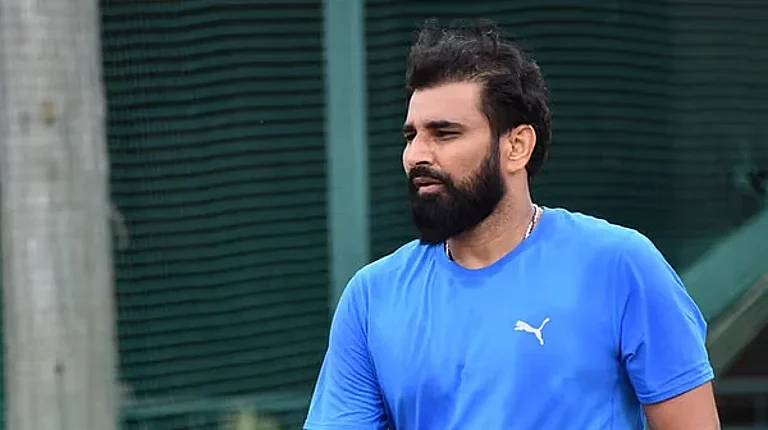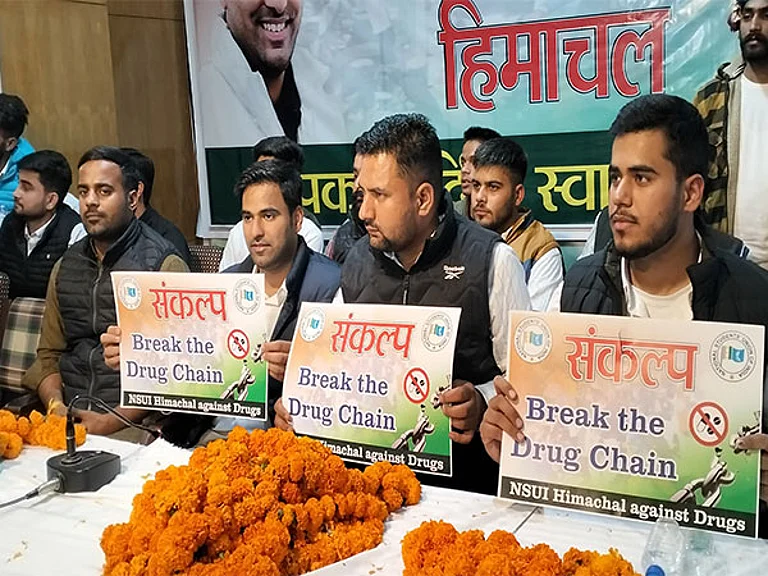Before the sun dawns on Delhi, Ved Prakash’s day is half over. A newspaper delivery man in Saket, his mind is full of worry about his daughter Shweta, who wants to join a postgraduate institution for engineering.
Prakash’s thoughts take him four years back—when Shweta had just cleared the JEE with flying colours. He remembers how proud he was that she hadn’t been to the now-almost-mandatory coaching classes. And then the anxiety returns—the familiar one that had hit him when he heard of the Rs 4 lakh annual fee. After everything he had done till then, would his economic status still thwart his daughter’s plans? The very thought was painful.
Coming home from his rounds that day, Prakash had stepped out immediately, heading straight to the bank. He thought the bank would readily agree to grant an education loan, seeing his daughter’s school record and JEE scores. But the bank wanted collateral, not marks. The next day he unlocked the only fixed deposit in his name, besides tapping into the insurance schemes he had been paying for.
What Prakash and Shweta are up against are barriers to education that limit the career prospects of large sections of youngsters across India. Many bright and eager students are unable to make it to their dream professions because of the lack of avenues to raise money for higher education. But there are also those who refuse to let the system bring them down.
Devra Khurd, a village near Jhansi, is home to Sunil and Savita. Most of the villagers are landless farmers. One of them, Naresh, says nobody in the village has ever thought of going to college simply because nobody can afford it.
No wonder it took Sunil some effort to convince her parents to let her study medicine at the government girl’s college in Jhansi if she could arrange all the expenses on her own. Her parents had some savings, but it was just not enough.
Sunil had always been a top student in her school and wanted to apply for a government scholarship to study medicine in Jhansi. “But, despite her marks, she couldn’t find any avenues for scholarship or even a loan,” says her relative. “All she got was a laptop from the government for finishing first in the village in her Class 12 exams.”
Since she had already got admission to the college, Sunil decided to rope in her friend Savita to start a business for earning the money they needed for their education. Savita had applied for BSc through open learning from the Indira Gandhi National Open University (IGNOU). These days, the girls attend college and study in the mornings, while in the evenings, they run a small shop where they stitch clothes for the village women. Seeing them, Naresh and other villagers feel more children from their village can now dream of going to college. “The first people to go to college from our village were two women. If they can do it and pay for their own education, then other students should also be encouraged to try,” says Naresh.
Though lack of access to funds is a problem that children from economically deprived sections face when they want to study further, lack of access to information is increasingly becoming a tougher barrier to cross. With digitisation taking over and most applications for exams and information on courses being available only online, making a smartphone and internet connection necessary, aspirational youth from the deprived sections have been unable to cope so far.
In a picturesque village in Pondicherry, 17-year-old M. Pugauhenthi, son of a domestic worker, has been nursing dreams of becoming a doctor. He wants to study medicine at the government college in Pondicherry. Yet, after passing Class 12, he had no idea that in order to get into a college, he had to give the National Eligibility cum Entrance Test (NEET) for medicine. “Nobody, neither my teachers at school nor the people in my community, knew I was required to sit for such an exam,” he says.
The language barrier is another problem. “Barely anyone speaks English here and Tamil is the medium of study. Even the Tamil newspapers I read every day had no information on when and how to apply for NEET,” he says.
Pugauhenthi is one of around 20 students in his class of 63 who are thinking of pursuing higher education. Having missed his chance this year, he says he still wants to study, but will have to choose either BSc (Pharma) or a BSc (Nursing). Pugauhenthi’s brother Povaradan too harboured dreams of going to medical school and is now studying BSc (Radiology) in a local private college.
Their mother says the family has to borrow money for any spending besides daily expenses. Both brothers say the only grant the government offers students in Pondicherry for higher education is of Rs 2,300, barely enough to cover tuition fees. If the children want to study, they have to rely on micro-finance groups. The family has already taken a loan of around Rs 55,000 for Povaradan’s studies and will probably have to borrow some more for Pugauhenthi.
The few avenues the government has for students from financially backward families to avail loans and grants for higher education are limited to the scheduled tribes and scheduled castes and available only for government colleges. R.L. Trikha, director of coaching institute FIITJEE, says that for the IITs, the government sponsors programmes such as “Fortunate 40”, which picks up meritorious students from middle schools and trains them for JEE. The problem begins after students get admission into colleges. “Several students are unable to afford the college fee, especially after the revised proposal to increase tuition fee,” says Trikha. “While the IITs exempt the fees of students from SC/ST families, other children from economically weaker sections are at a disadvantage. As of now, around 48.5 per cent of students at undergrad levels in the IITs do not pay fees.”
Making funds available to students for pursuing higher education is only the first step. The government needs to do more, so that aspirants like Pugauhenthi and Sunil can cross language barriers and get access to all relevant information. Only then can their dreams lead to actually pursuing careers that may now seem to be out of their reach.


























